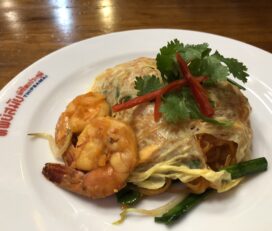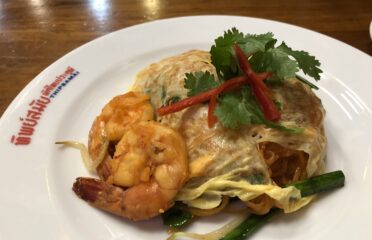“`html
Bangkok Floating Markets Travel Guide
Bangkok’s floating markets are an essential destination for those eager to dive into Thailand’s vibrant cultural heritage. These lively markets, which have their roots in the 19th century, present a distinctive mix of local cuisine, unique crafts, and cultural experiences that are truly one-of-a-kind.
Overview
The floating markets of Bangkok reflect the city’s historical importance and its ability to harmonize tradition with modern life. More than just shopping venues, these markets provide a window into the city’s rich past and lively lifestyle. Whether you’re a culinary enthusiast, a culture lover, or an adventurous traveler, visiting Bangkok’s floating markets promises an unforgettable experience.
Historical Background
Dating back to the 19th century, Bangkok’s floating markets emerged when canals, known as *klongs*, served as the primary transportation routes. Locals utilized boats for trading goods and produce, creating a bustling network of waterways that were vital to the city’s economy. Today, these markets continue to be an integral part of Bangkok’s cultural fabric, allowing visitors to witness the traditional way of life.
Getting There
The most renowned floating markets in Bangkok are situated just outside the city center. Here’s how to reach them:
- Damnoen Saduak Floating Market: Approximately 100 km southwest of Bangkok. The best way to reach it is via a shared van from Mo Chit bus station or by booking a tour through an agency.
- Amphawa Floating Market: Located in Samut Songkhram, about 90 km southwest of Bangkok. You can take a private long-tail boat from the jetty under Thaksin Bridge or opt for a taxi.
- Taling Chan Floating Market: Situated in Taling Chan District, Bangkok. It is easily accessible by taxi or public transport.
- Khlong Lat Mayom Floating Market: Found on Bang Ramat Road in Taling Chan District, Bangkok. It can also be reached by taxi or public transport.
Must-See Attractions
Each floating market offers a unique experience, but here are some highlights you shouldn’t miss:
- Damnoen Saduak Floating Market:
- Vibrant boats filled with tropical fruits and sizzling street food.
- Unique souvenirs from local vendors right on the water.
- Traditional wooden cone hats and Thai clothing.
- Must-try dishes include boat noodles, coconut ice cream, and mango sticky rice.
- Amphawa Floating Market:
- Fresh seafood sold from boats, including squid, scallops, and fishcakes.
- Local food stalls offering a variety of Thai dishes, such as fish stew and grilled squid.
- Evening firefly tours along the river.
- A unique temple enveloped by a giant tree located across the river.
- Taling Chan Floating Market:
- Small longtail boat cruises to explore nearby canals.
- Traditional Thai dishes and snacks sold from wooden boats.
- Fresh produce and flowers available from boats.
- A more relaxed and authentic floating market experience.
- Khlong Lat Mayom Floating Market:
- A local atmosphere with a strong emphasis on traditional Thai food and home-cooked meals.
- Fresh produce and flowers sold from wooden boats.
- Short boat tours through nearby canals.
Entry Information
No specific ticket is required to visit the floating markets in Bangkok. However, some markets may charge a small fee for boat rides or entry. Here are some general details:
- Damnoen Saduak Floating Market: Open daily from 7:00 AM to 11:00 AM. Boat tours are available, and some vendors may charge a small fee for their products.
- Amphawa Floating Market: Open on weekends from 8 AM to 3 PM. There may be a small fee for boat rides or entry.
- Taling Chan Floating Market: Open on weekends from 8 AM to 5 PM. There may be a small fee for boat rides or entry.
- Khlong Lat Mayom Floating Market: Open on weekends from 8 AM to 5 PM. There may be a small fee for boat rides or entry.
Visiting Tips
Here are some tips to enhance your experience at the floating markets:
- Arrive Early: To avoid crowds, it’s best to arrive early at the markets.
- Dress Comfortably: Wear suitable clothing and footwear for walking and boat rides.
- Sun Protection: The sun can be intense, so bring sunscreen, hats, and sunglasses.
- Respect Local Customs: Be courteous to local vendors and traditions. Follow instructions from market staff and stay behind the red line when the train approaches at Maeklong Railway Market.
- Try Local Cuisine: The floating markets offer a wide array of delicious local dishes. Be adventurous and sample some traditional foods.
- Explore Beyond the Market: Take time to discover the surrounding areas, including nearby temples and local communities.
Conclusion
In summary, Bangkok’s floating markets are a treasure trove of cultural experiences, delectable food, and unique souvenirs. Whether you’re an experienced traveler or just beginning your journey, these markets are a must-visit destination that will leave you with lasting memories.
“`







